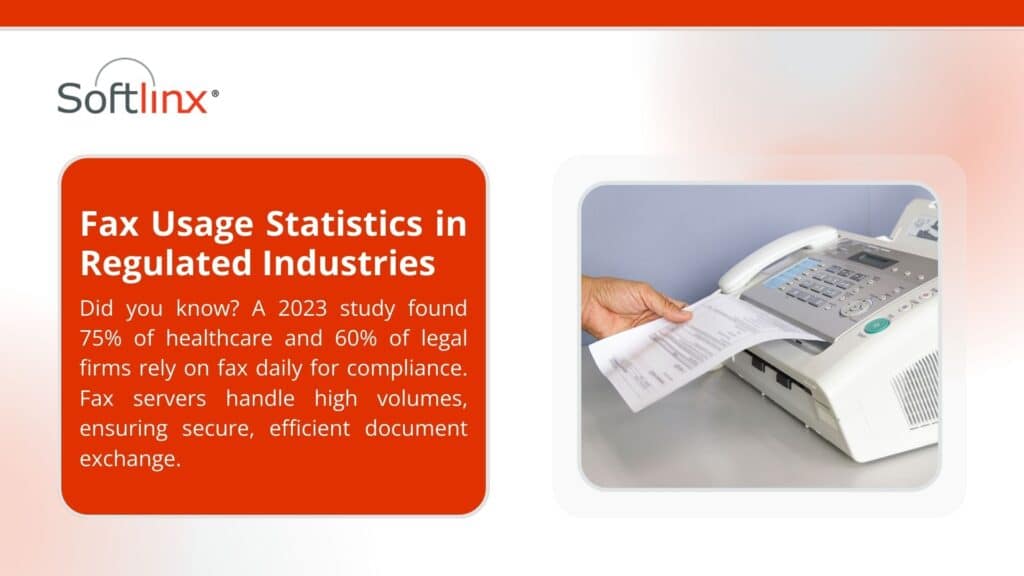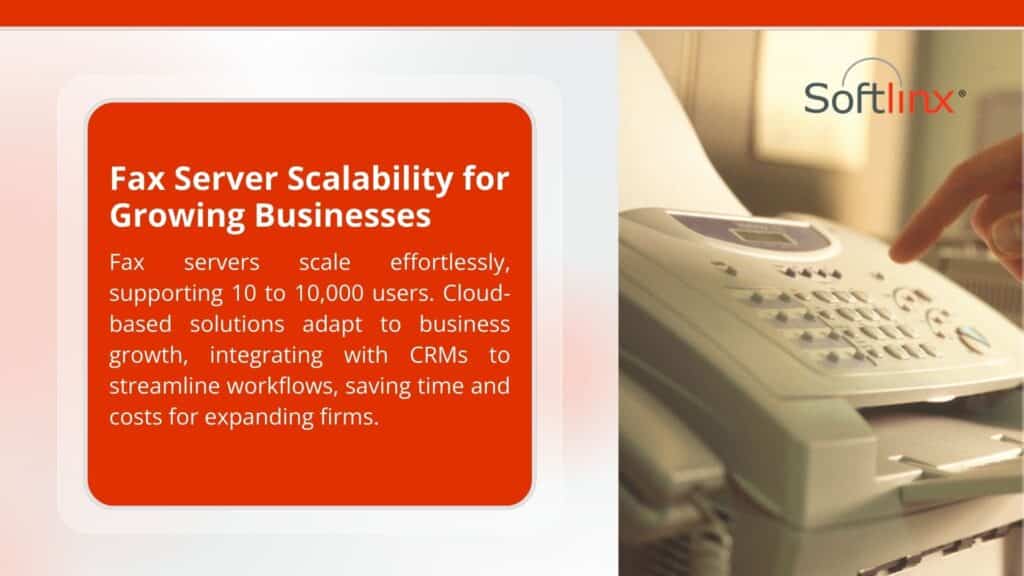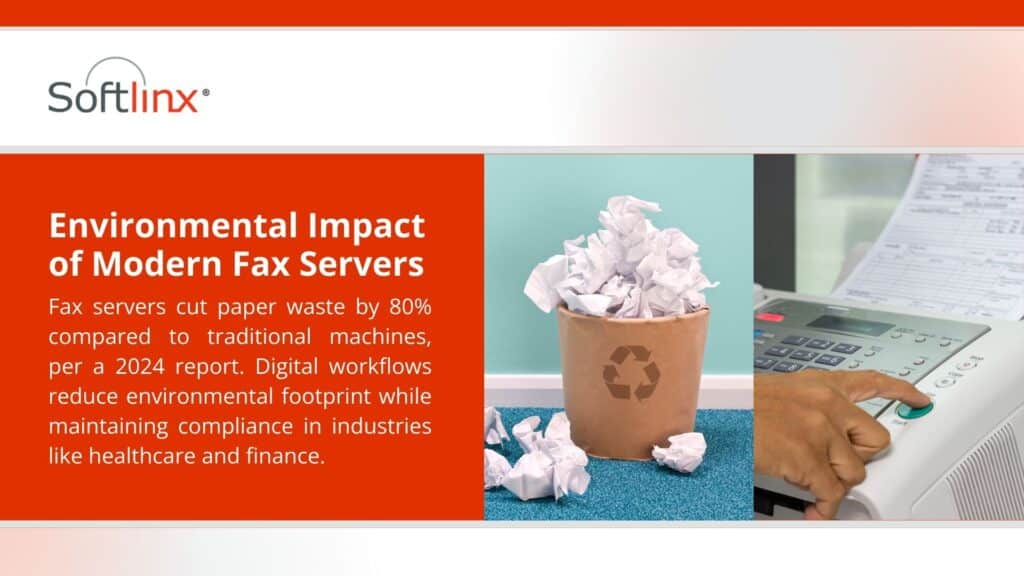Nobody wants to admit they still need fax technology. It feels like admitting you’re stuck in 1995. But walk into any hospital, law office, or government building and you’ll find they’re sending more faxes than ever.
The dusty fax machine sitting in the corner? That’s history. Today’s businesses run fax communications through servers that handle everything digitally. No more paper jams, no more busy signals, no more walking across the office to check if something went through.
This shift happened because certain industries literally cannot function without fax. Healthcare regulations require it. Court systems demand it. Insurance companies won’t accept anything else for certain transactions. While everyone else moved to email and text messaging, these sectors doubled down on fax.
A modern fax server connects to the company network like any other business application. People send faxes from their computers. Incoming documents show up in email inboxes. Everything gets stored digitally with proper search capabilities. It’s basically email, but with the legal standing and security requirements that regulated industries need.
What Makes Today’s Fax Server Different From Old Machines
The biggest change is volume handling. Traditional fax machines could handle one transmission at a time. Modern fax servers process dozens simultaneously without breaking a sweat. This matters when a busy medical practice needs to send 200 patient records before lunch.
Document routing has gotten smart too. Instead of all faxes printing to one location, servers can read incoming numbers and automatically send documents to the right departments.
Emergency room faxes go to ER staff. Lab results reach the ordering physician. Insurance authorizations land with billing departments.
Here’s how things have changed:
| Old Fax Machine | Modern Fax Server |
| One fax at a time | Handle dozens simultaneously |
| Everything prints on paper | All digital – no paper needed |
| Manual sorting and filing | Automatic routing by department |
| Constant maintenance issues | Software-based – minimal upkeep |
| Separate phone line required | Uses existing internet connection |
| Limited to one location | Supports multiple office locations |
Security has improved dramatically too. Old fax machines offered zero protection – anyone could grab documents from the output tray. Modern systems encrypt transmissions, require user authentication, and maintain detailed logs of who sent what to whom.
The integration possibilities are endless. Features like email to fax let people send documents through their regular email programs. Print to fax functionality means sending a fax feels exactly like printing to any other office device.

Who Actually Uses This Technology
Healthcare dominates fax server usage. Hospitals, clinics, and medical practices send patient records, test results, and prescription information through fax systems daily.
HIPAA regulations specifically allow fax transmission for protected health information, making it one of the few communication methods that meets strict healthcare compliance requirements.
Large medical facilities often process thousands of fax transmissions daily. Emergency departments receive patient histories from ambulance services. Specialists send consultation reports back to referring physicians. Insurance departments handle prior authorization requests. The volume requires server-based systems that can handle peak loads without delays.
Legal firms represent another major user group. Court systems in many jurisdictions still require fax filing for certain documents. Beyond court requirements, fax transmission carries more legal weight than email in many situations. Law firms handling high-stakes litigation can’t risk communication failures, making reliable fax servers essential infrastructure.
Financial services companies rely heavily on fax for loan applications, insurance claims, and regulatory reporting. Mortgage companies, in particular, handle enormous document volumes through fax systems integrated with loan processing software. The audit trail capabilities match perfectly with financial industry compliance requirements.
Government agencies at every level maintain fax requirements for official communications. Building permits, licensing applications, and inter-agency correspondence often mandate fax transmission.
These organizations need systems capable of handling public-facing communications while maintaining detailed records.

Setting Up a Fax Server That Actually Works
Most fax server projects fail because organizations try to change too much at once. The key is matching the technology to existing workflows rather than forcing people to learn entirely new processes.
Start by understanding current fax patterns. How many documents get sent monthly? Which departments use fax most heavily? What types of documents require fax transmission? This information determines system capacity requirements and integration priorities.
Network infrastructure usually needs minimal changes. Most modern fax servers operate efficiently over standard business internet connections. Organizations with extremely high volumes might need dedicated bandwidth, but typical business usage works fine with existing network capacity.
User training makes or breaks implementation success. People resist systems that complicate their daily routines. The best fax server deployments feel invisible to end users – they send documents the same way they always have, but everything works more reliably behind the scenes.
Integration planning requires careful consideration of existing software systems. Fax servers that connect with document management platforms, customer databases, and workflow applications provide much higher value than standalone systems. The goal is making fax communications part of broader business processes rather than isolated activities.
Costs and Expected Returns
Fax server pricing varies wildly depending on organization size and feature requirements. Small business cloud solutions start around $50-100 monthly. Enterprise systems for large organizations can cost thousands monthly, but they typically replace much more expensive traditional infrastructure.
Traditional fax setups cost more than people realize. Dedicated phone lines run $50-100 monthly each. Busy organizations often maintain multiple lines to prevent busy signals. Add paper, toner, equipment maintenance, and replacement costs, and a single active fax machine easily costs $300-500 monthly to operate.
Labor savings often provide the biggest return on investment. Traditional fax operations require someone to load paper, clear jams, sort incoming documents, and file everything properly. Server-based systems automate these tasks, freeing staff for more productive work.
Reliability improvements have real business value. Missed fax transmissions can delay medical treatments, cause legal filing deadlines to be missed, or hold up financial transactions. The cost of a single communication failure often exceeds the annual technology investment.
Where Fax Server Technology is Headed
Cloud hosting has become the standard for new installations. Instead of buying servers and managing software, organizations subscribe to hosted services that handle capacity scaling, updates, and maintenance automatically. This shift reduces total ownership costs while improving reliability.
Mobile access capabilities continue expanding. Modern fax servers provide full functionality through smartphone apps and web browsers. Remote workers can send, receive, and manage fax communications from anywhere with internet access.
Artificial intelligence is starting to appear in advanced systems. Document recognition can automatically classify incoming faxes, extract important information, and route documents based on content rather than just sender information. These features reduce manual processing while improving accuracy.
Security continues advancing to meet evolving cybersecurity requirements. Advanced encryption, multi-factor authentication, and integration with enterprise security platforms provide protection that meets current regulatory standards.
Technology is becoming more useful and less annoying. Which is exactly what happens when outdated hardware gets replaced with modern software solutions.

Dealing with Unreliable Fax Equipment that Slows Down Your Team?
Traditional fax machines create more problems than they solve. Paper jams during important transmissions. Busy signals when deadlines loom. Manual filing that wastes hours every week. There’s a better way.
Modern fax server solutions from SoftLinx eliminate these headaches while providing the reliability and compliance features that regulated industries require. Whether sending dozens or thousands of monthly faxes, the right system improves efficiency while reducing operational costs.
Contact our team today to learn how modern fax server technology can streamline communications while maintaining the security and legal compliance standards your business demands.
For More:
